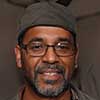This book began accidentally, while I was at work on another book, about Wall Street and the 2008 U.S. financial disaster. I’d become interested in a tiny handful of investors who had made their fortunes from the collapse of the subprime mortgage market. Back in 2004, the biggest Wall Street investment banks had created the instrument of their own destruction, the credit default swap on the subprime mortgage bond. The credit default swap enabled investors to bet against the price of any given bond—to “short” it. It was an insurance policy, but with a twist: the buyer didn’t need to own the insured asset.
Hundreds of investors had dabbled in the credit default swap market—a lot of people had thought, at least in passing, that the debt-fueled U.S. housing boom was unsustainable—but only fifteen or so had gone all in, and placed enormous bets that vast tracts of American finance would go up in flames. Most of these people ran hedge funds in London or New York; most, usually, avoided journalists. But on this topic, at this moment, they were surprisingly open. All had experienced the strange and isolating sensation of being the sane man in an insane world and, when they talked about their experience, sounded as a person might if he had sat alone and in silence in a small boat and watched the Titanic steam into the iceberg.
A few of these people were temperamentally ill- suited to solitude and silence. Among this subset was the manager of a hedge fund called Hayman Capital, in Dallas, Texas. His name was Kyle Bass. Bass was a native Texan in his late thirties who had spent the first years of his career, seven of them at Bear Stearns, selling bonds for Wall Street firms. In late 2006 he’d taken half of the $10 million he had saved from his Wall Street career, raised another $500 million from other people, created his hedge fund, and made a massive wager against the subprime mortgage bond market. Then he’d flown to New York to warn his old friends that they were on the wrong side of a lot of stupid bets. The traders at Bear Stearns had no interest in what he had to say. “You worry about your risk management. I’ll worry about ours,” one of them had told him. By the end of 2008, when I went to Dallas to see Bass, the subprime mortgage bond market had collapsed, taking Bear Stearns with it. He was now rich and even, in investment circles, a little famous. But his mind had moved on from the subprime mortgage bond debacle: having taken his profits, he had a new all-consuming interest, governments. The United States government was just then busy taking on to its own books the subprime loans made by Bear Stearns and other Wall Street banks. The Federal Reserve would wind up absorbing the risk, in one form or another, associated with nearly $2 trillion in dodgy securities. Its actions were of a piece with those of other governments in the rich, developed world: the bad loans made by highly paid financiers working in the private sector were being eaten by national treasuries and central banks everywhere.
In Kyle Bass’s opinion, the financial crisis wasn’t over. It was simply being smothered by the full faith and credit of rich Western governments. I spent a day listening to him and his colleagues discuss, almost giddily, where this might lead. They were no longer talking about the collapse of a few bonds. They were talking about the collapse of entire countries.






